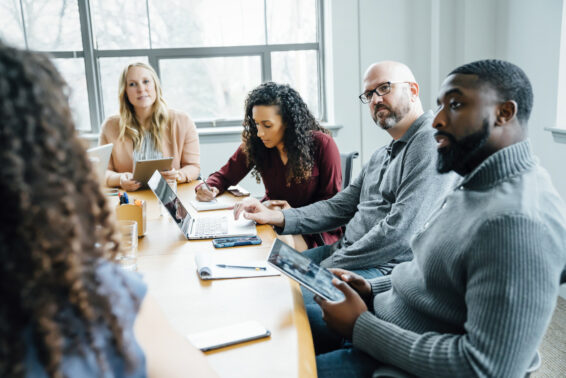Your Genesys Blog Subscription has been confirmed!
Please add genesys@email.genesys.com to your safe sender list to ensure you receive the weekly blog notifications.
Subscribe to our free newsletter and get blog updates in your inbox
Don't Show This Again.

Employee resource groups — known affectionately at Genesys as inclusion groups — perform one of the most vital and essential roles in the effective development of a corporation’s inclusion efforts. At Genesys, we now have four employee resource groups, with others currently forming. Collectively, they’ve formed the passionate, energetic core of our inclusion program’s development. There’s a reason that they’re at the center: To build a strong program, you have to lead with inclusion.
So, for anyone asking, “What’s an employee resource group?” let’s start there. Employee resource groups (ERGs) are identity- or experience-based groups that build community. They function in a variety of capacities, depending on the organization. But, in addition to building community, they can be active in recruiting, promoting personal and professional development, and providing peer support within an organization. Most ERGs are volunteer-based and offer stretch leadership and professional growth opportunities. Most are formed to support employees from underrepresented groups around issues like race, gender, sexual orientation, veteran status or disability.
Collectively, we’re at a moment of national turmoil and a great many of us felt alone with our personal feelings about it in the workplace. Three employee resource groups quickly formed organically. Impassioned leaders emerged. I also had to make a quick calculus: These groups had to be something more than passion projects for core members. With a small team of my own, the inclusion groups would be essential to forwarding our initiatives. They would be central infrastructure, not a “nice to have” add on.
There are many reasons why these groups are integral to the success of inclusion efforts, but here are a few.
All of these benefits come with one small rub — employee resource groups are essential to building programs but are composed largely of volunteers who already have full-time roles within the organization. These are people who are already busy. They’re already trying to find their way professionally. Belonging to an inclusion group can’t put too much extra weight on their backs without rewarding them for carrying that weight.
It’s absolutely essential to create an environment where members realize that the marriage between the group and the company is one that’s mutually beneficial. And this can be achieved in several ways.
Here are some of the ways I’m looking to create this mutual-admiration society between the groups and their members.
Moving forward, it’s my hope that deploying these strategies early and often will help us reach our goal of a more diverse, equitable and inclusive company sooner than otherwise possible. Our team might be small, but the diversity of talent, skills and lived experiences all around me from hundreds of inclusion group members is huge. These largely self-organized, grassroots teams were formed by employees for the benefit of each other. But being able to marshal their collective strengths for the benefit of all is a tremendous luxury.
Going into the new year, our goal is to move from inclusion to action. What can this group of talented and passionate people do? It’s like getting the keys to a new Ferrari. And we’re going to push the gas pedal down and see how fast these groups can push projects down the road.
How can they change the conversations taking place at the top? How can they help propel organizational change where it’s needed? How can they help bring more diverse talent pools to meet those open requisitions? And how can they shift perceptions about underrepresented groups and making sure they shine?
I can’t wait to find out.
Subscribe to our free newsletter and get blog updates in your inbox.